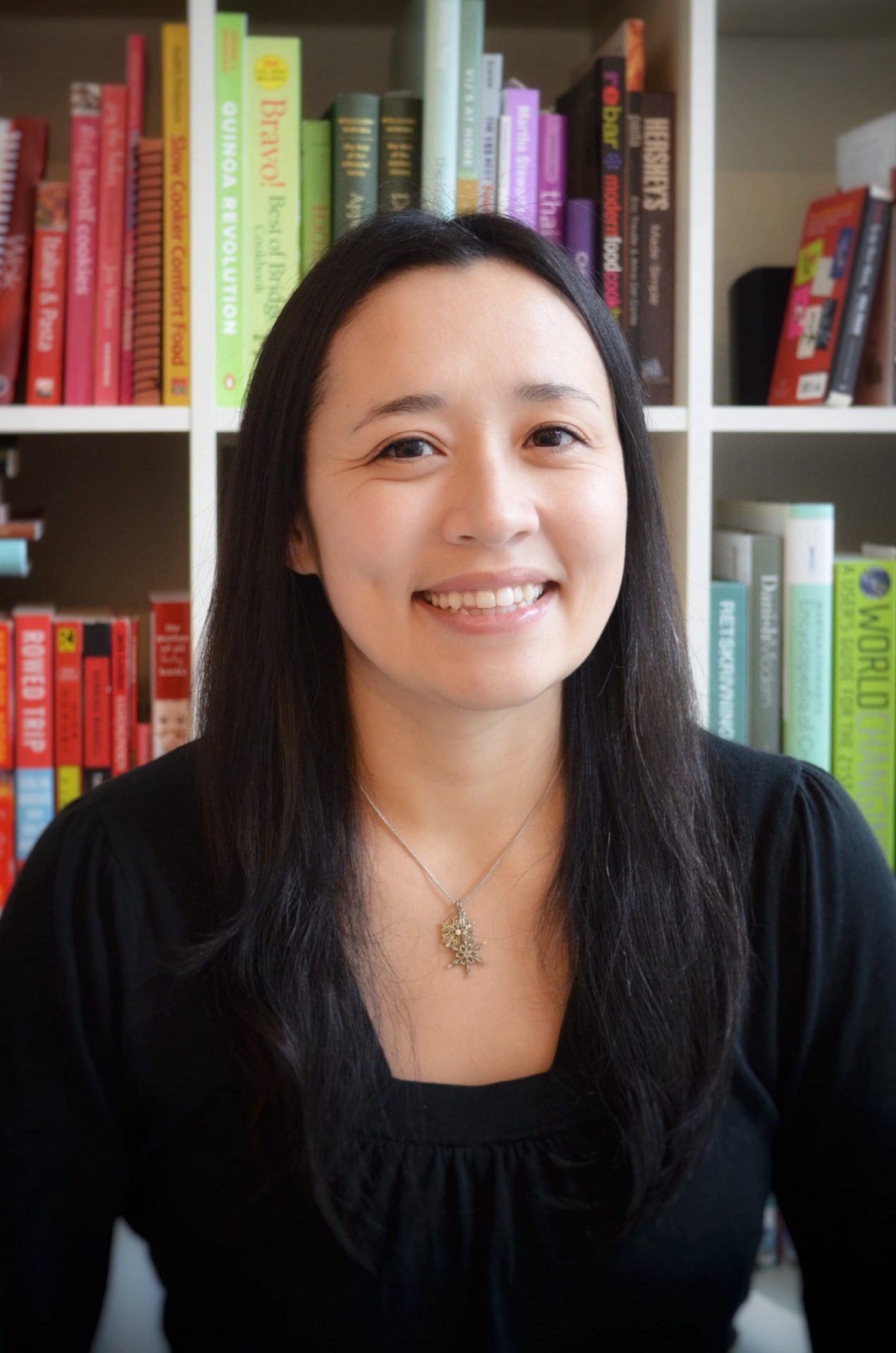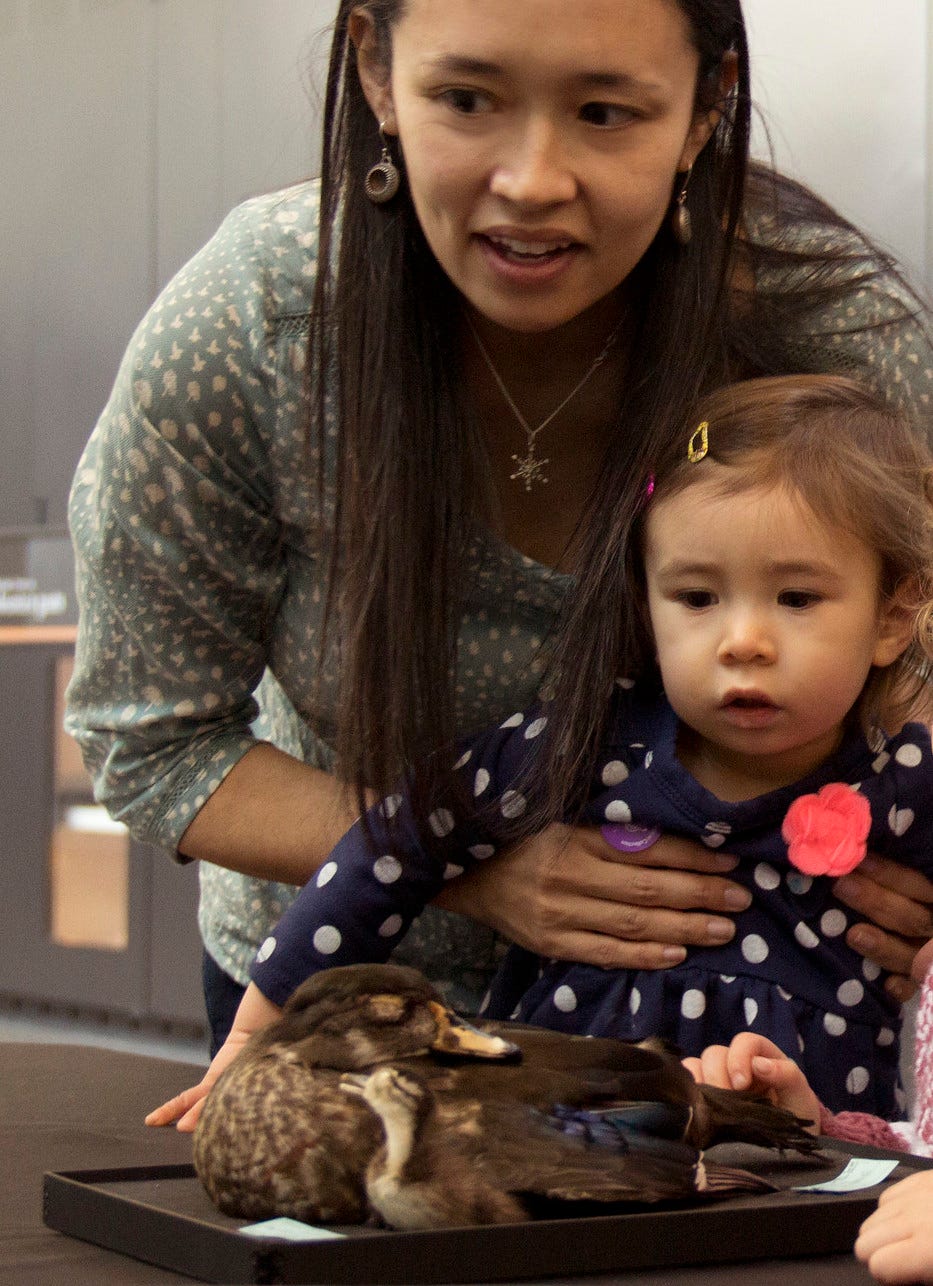From the bench to the museum: Yukiko Stranger-Galey
Back to Posts
by Marine Da Silva, Ph.D., Business Development Associate, Mitacs

Looking for ideas for career transitions from the bench? Here’s one from Yukiko Stranger-Galey, who has a background in Biochemistry and Microbiology, and now curates exhibits for museums!
Working at the Beaty Biodiversity Museum
As an Exhibits & Design Manager, Yukiko develops exhibits that celebrate the wonder and diversity of the natural world. Part of her work focuses on temporary exhibitions, fostering connections between science, art, and communities. Yukiko’s typical workday is like doing research… for the public! She collaborates with research scientists to design, write and showcase exhibits in ways that will connect with the public and engage them in the science that is all around them.
The Beaty Biodiversity Museum opened in 2010. It is easily recognizable at the Vancouver campus of the University of British Columbia, due to the massive blue whale skeleton that you can see through the large windows. (Fun fact: the museum is home to Canada’s largest blue whale skeleton.) The Beaty Museum is not just a regular public display museum, but also a site for active scientific research, enhanced through its connection with the attached Biodiversity Research Centre.
Yukiko recently curated the exhibitions, “Closer by Julya Hajnoczky and Katrina Vera Wong, “ and “Skin & Bones by Catherine M. Stewart with accessories from the clothing collections of Claus Jahnke & Ivan Sayers”.
According to Yukiko, science should be accessible to everyone, we just need the right people or organizations, like museums, to help build a bridge to the public.
“The opportunity to share the stories of the people, organisms, and objects in our world inspires me every day,” she said.

An atypical career journey
Yukiko grew up in London, UK. As a young girl, she was passionate about science, and also English literature. Like many young women, she was inspired by Marie Curie, who was a pioneering female scientist and the first woman to win the Nobel Prize. When Yukiko started to study at university, she concentrated on science rather than literature, aware that she would need a university degree to enter a career as a scientist; and on the other hand she would always be able to feed her love of literature even without formal training.
She studied Biochemistry at the University of Edinburgh in Scotland, UK and completed her Master’s degree in Microbiology at the University of Chicago in the USA. During her graduate studies, she developed a keen interest in vaccines and helping people. After completing her Master’s thesis, she continued on with a doctorate at the University of Chicago. Her research focused on the development of a vaccine against MRSA (methicillin-resistant Staphylococcus aureus), a group of bacteria that are resistant to certain antibiotics, which makes their related infections difficult to treat.
While Yukiko found her Ph.D. work interesting and rewarding with publications in a peer-review journal, she felt that something was not quite right.
“I loved my work as a scientist in the lab, but I found my field of study growing narrower and narrower, and I missed that daily connection with people and community,” she said.
After a couple of years of Ph.D. work, she decided to quit, even if she had no other plan!
As her visa didn’t allow her to work in the USA, she applied for a volunteer position at the Adler Planetarium in Chicago. Although she had no background in Astronomy, she enjoyed learning about new topics and explaining them to visitors. Most importantly, she uncovered a passion for communicating science to the public. It was her first experience working in a museum.
After moving to Vancouver, she joined Science World as a Science Facilitator in 2007, and eventually started working on the team responsible for developing science exhibits. This position involved a lot of writing and reading, so both Yukiko’s passions, science and literature were finally reunited!
Yukiko joined the Beaty Biodiversity Museum as a volunteer in 2011 and was hired to lead the Exhibits & Design team a few months later.
A woman in science and a working mother
Referring to her career path, Yukiko states that she feels fortunate, because she was at the right place at the right time.
She certainly has faced a few challenges in pursuit of a career from the bench to the museum. When she started working for museums, museum studies were still an emerging discipline, so her background in science combined with her communication skills and her ability to dive into research made the transition easier.

Yukiko is not only a woman in science, but also a mother of 2 young children. She recognizes that it is not easy to find the right work/life balance, with family-friendly workplaces offering flexibility to parents a key to success. Blending family and career has been a process, but Yukiko says she has learned to leave work at the office and treasure that uninterrupted family time.
As a SCWIST member, Yukiko would like to serve as a role model and support women working or interested in working in the STEM field. She encourages young girls who are considering a career in STEM to not feel intimidated. “Volunteer in labs, in museums, or any place you would like to work and get to know the organization and the people. Meet with women working there, many will be glad to share their experiences and provide advice,” she said.
It was a pleasure to meet Yukiko. Her career path is inspiring and demonstrates that it is important to trust your gut and search out a career that will combine all your passions.